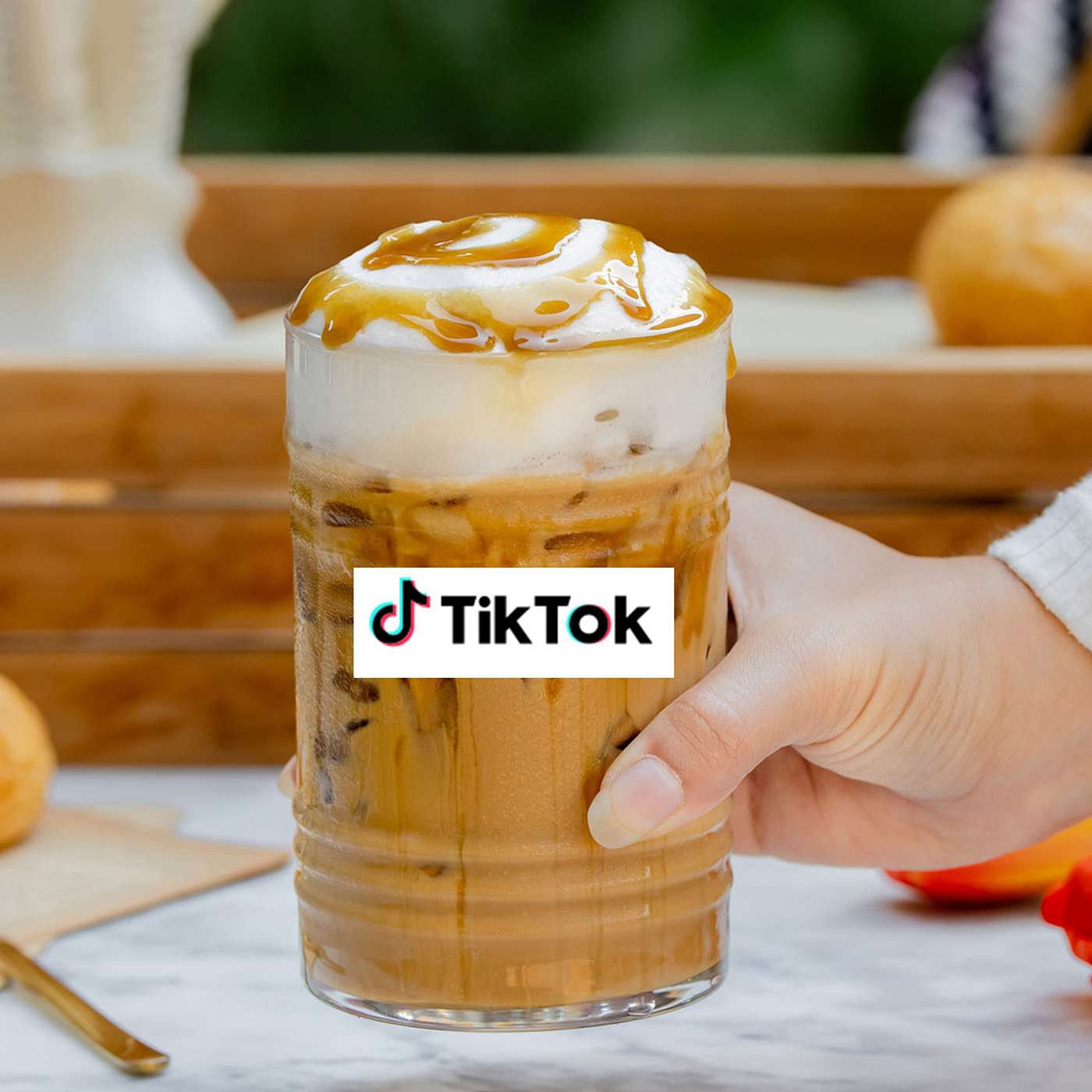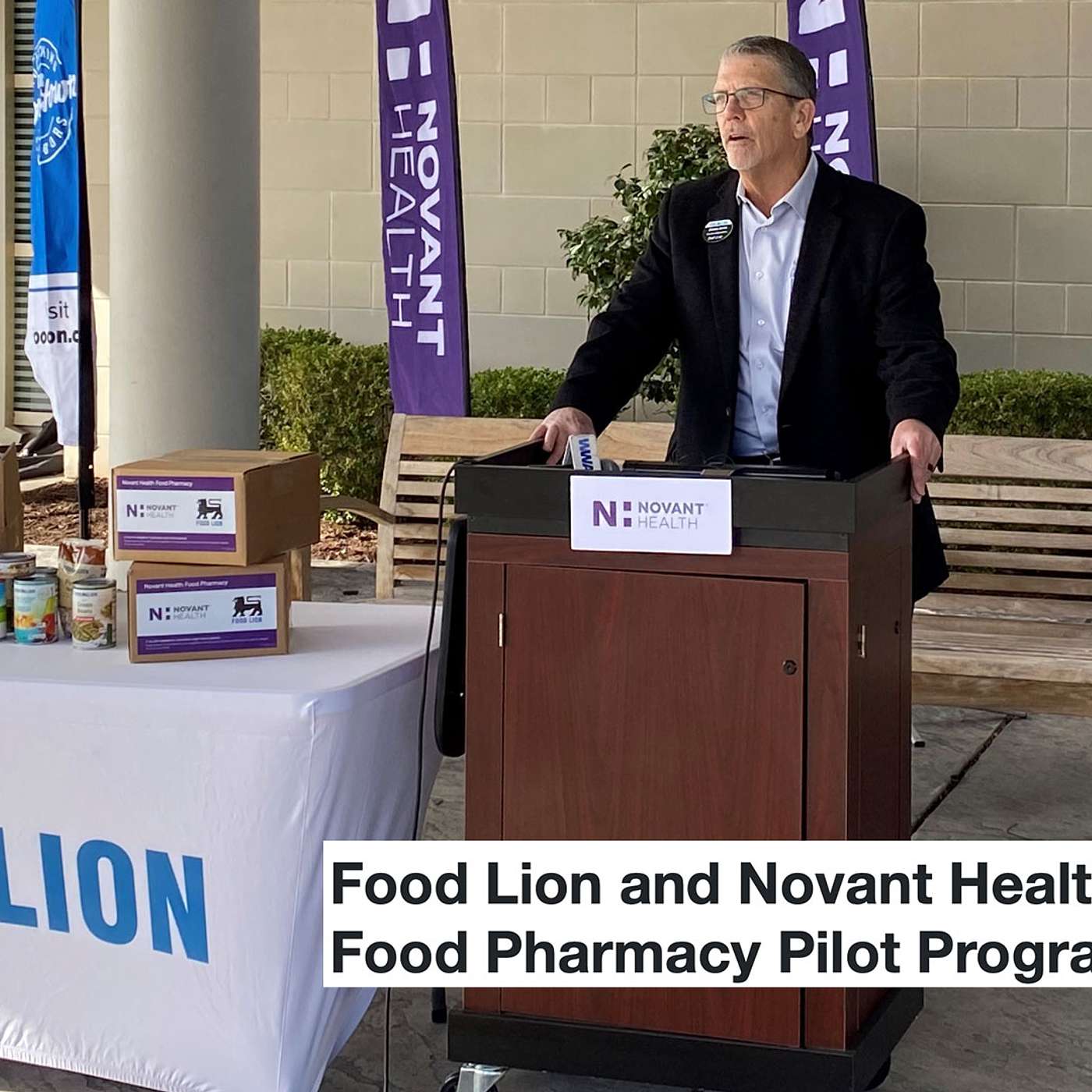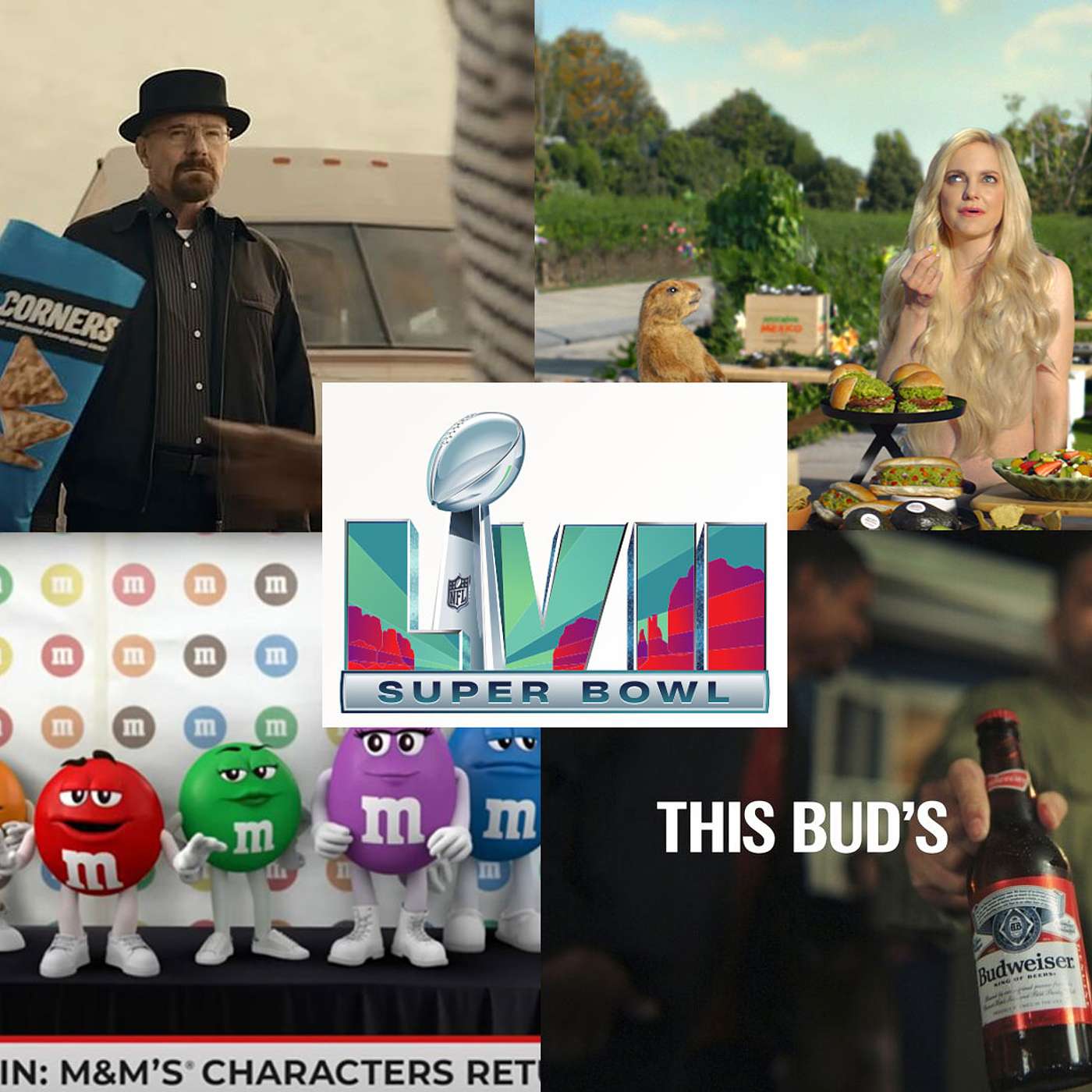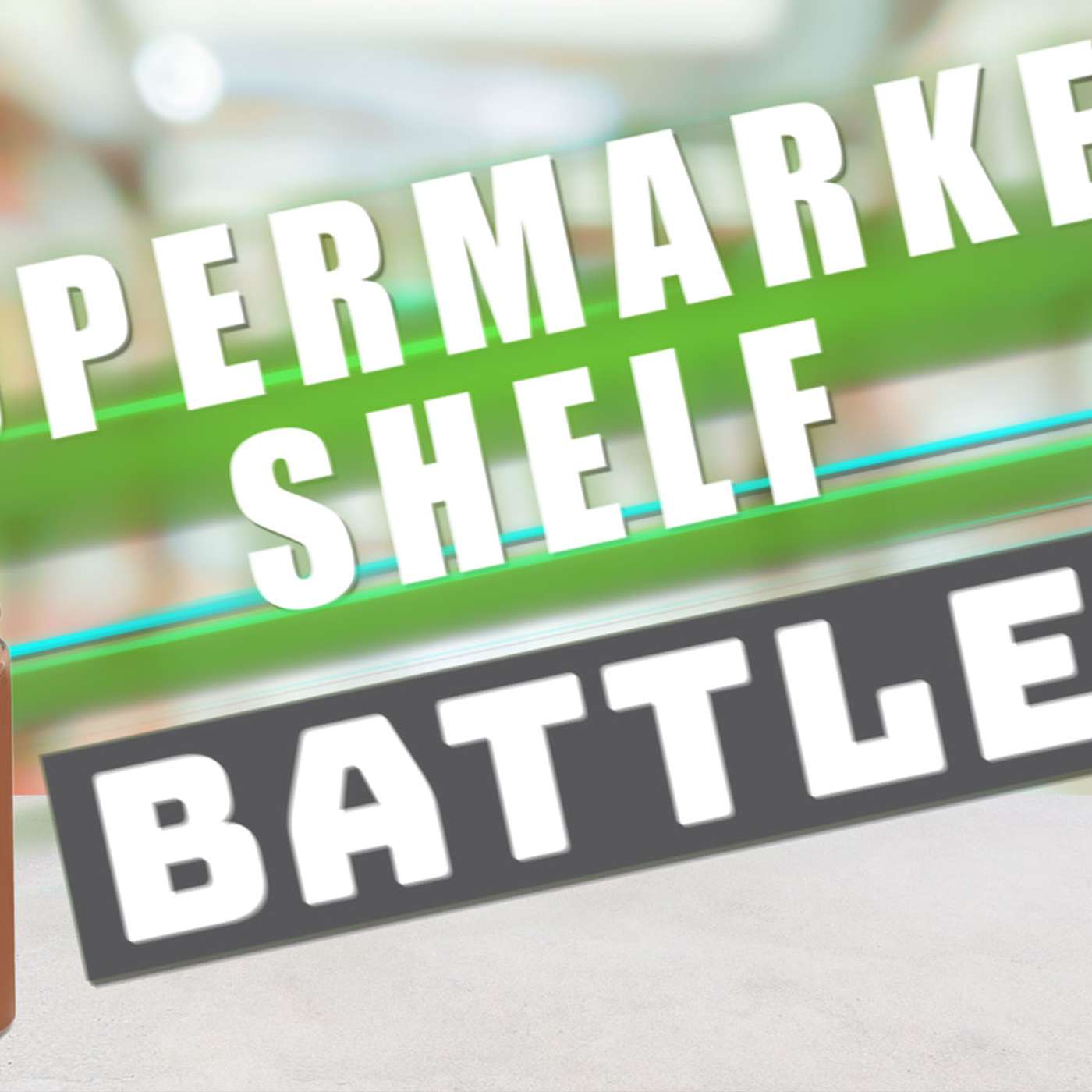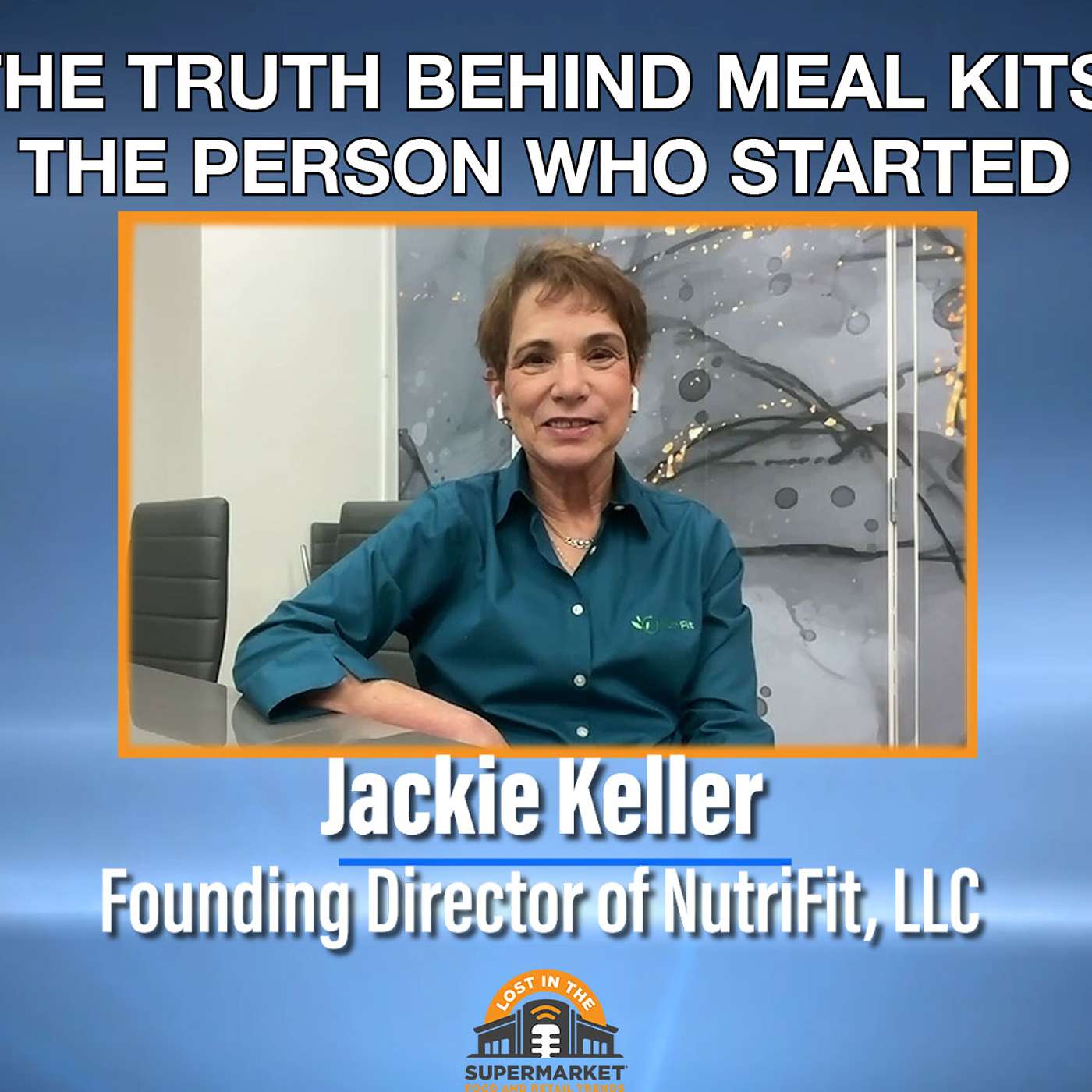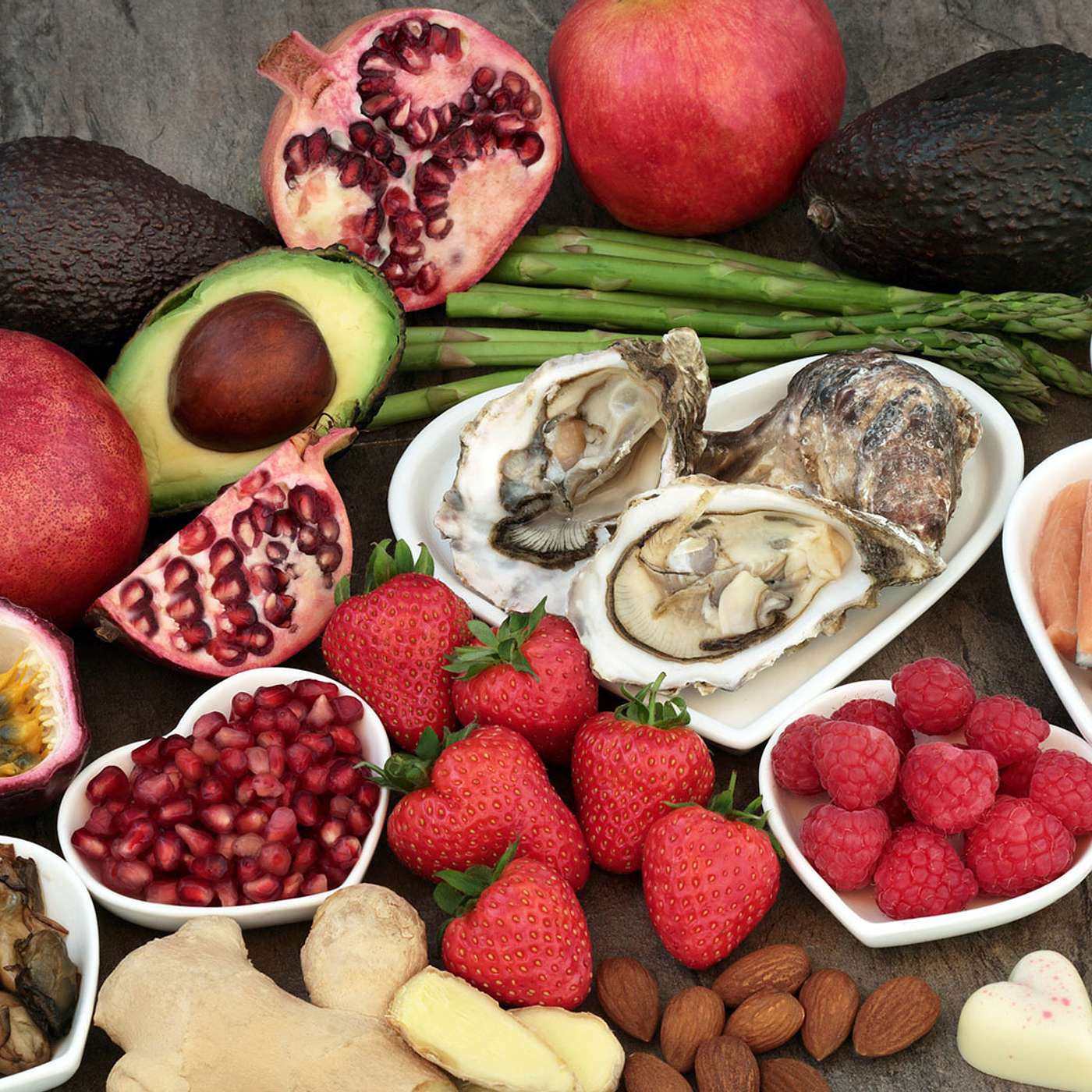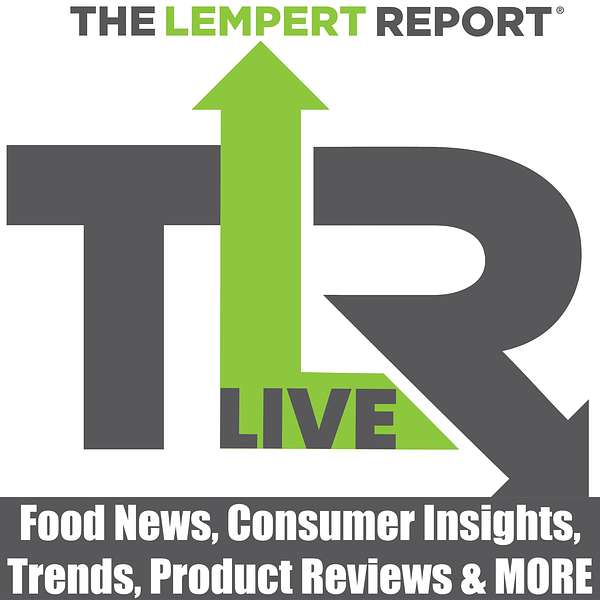
The Lempert Report LIVE
The Lempert Report LIVE
Valentine's Day Foods, TikTok Secret Menus, Food Delivery Twist
Welcome to the Lempert Report LIVE.
- Those Superbowl food ads – hit or miss?
- TikTok’s restaurant secret menu reveals
- A new twist on food delivery – that may actually save it
- Are food companies green washing their sustainability efforts?
- Food Lion’s new food prescription program
- A supermarket shelf battle – who will win the hazelnut spread war?
- The last chance to make your Valentine’s Day extra special
Welcome to the Lempert Report Live. On today’s broadcast– those Superbowl food ads– hit or miss? TikTok’s restaurant secret menu reveals, A new twist on food delivery– that may actually save it, are food companies green washing their sustainability efforts. Food Lion’s new food prescription program– a supermarket shelf battle– who will win the hazelnut spread war, and on bullseye the last chance to make your valentine’s day extra special. Let’s get started. So, Sally, there's some late breaking news before we start on the stories that I mentioned that comes o ut o f the White House. What's that about?
Sally:Phil, this morning the Wall Street Journal reported that the Biden administration is now going to be approving state requests to extend the Medicaid program, with funds that can cover food and nutrition counseling for those in need. Now, this effort hopefully will be able to cut some of our medical cost and pharmaceutical cost, because we have seen that, you know, a lot of chronic ill illnesses are largely linked to diet or can be, h elped through diet. So it's a very interesting program. Critics of the program, you know, argue that the SNAP program already offers food to those that are disadvantaged, but it will be up to the states to choose on whether or not they wann a use this program.
Phil:Yeah, and I think to those critics, hear one thing loud and clear, it's about nutritional counseling. It's not just about the food. It's teaching people, you know, new eating behaviors. That's gonna be what changes the health outcomes. And what I love is, Senator Roger Marshall, h e's a Republican from Kansas, says, there needs to be a bigger emphasis on how we start encouraging people to make good, healthy choices, which can help treat chronic diseases and r educe hospital readmissions. Yes, by all means, it, it's a great move. We applaud it, but, you know, underscore counseling. Let's talk about TikTok. Secret menus have been around for a while here in Southern California. Probably the most famous is In and Out Burger. There have been some other ones, but now one of the newest trends on TikTok is that people are posting, you know, whether they be true or not, secret menus, f rom various, restaurant, food service operations, f or example, and it's creating havoc. So for example, waffle H ouse had to p ost handwritten signs that pleads with their customers to stop ordering a special combo that they had seen on social media. It says, order from the menu. We're not making anything you saw on TikTok. What's going on here? Is this a trend that we need to pay attention to? And what can grocery retailers learn from it?
Sally:Well, it is interesting that it is wreaking havoc. And yes, in the case of the Waffle House, ordeal, a a woman going through pregnancy,, r eally craving some Waffle House. And so she, she, she got some waffles and a Texas bacon me lt a nd put it together and made a sandwich and then got 6.3 million views over this. but obviously employees of the Waffle House were not prepared to make this. Now, this sandwich request cos ts$2 0. That's a high dol lar am ount for a Waffle House. And then there are other ones like Chipotle, i s dealing with a, an e mployee who passed along an idea to a food influencer on TikTok, abo ut another,, qu esa dilla combo that, you know, could be a secret menu idea. And once again, this video got 1.9 million views and the restaurant chain was not prepared to deal with it. However, some have really embraced this. Joe and the Juice has embraced this with one of theirs, and they found out that their tunacota sandwich that somebody posted on TikTok, t hat t heir sales of this item rose 5 8%. So, you know, I think what we're seeing here is an opportunity that maybe some of these restaurant chains haven't prepared for, but if they are able to embrace this and take these menu ideas as something that they can permanently put on their menu, then they might look at some really big sales a nd a lot more customers.
Phil:Absolutely. And, and also, let's not forget, in the case of J oe a nd The Juice, and I'm a fan of that chain, I think it's great. You know, they actually ran out of tuna because they couldn't make enough sandwiches. But also there's a learning here from retailers. For retailers when they look at their food service menus and more retailers have done gr ocers a nd so on. What could they do with working with, whether it's Ti kTok i nfluencers or their own staff to do these kind of"secret menus"? But that they can be prepared, to your point. Also the one that I love, which was not on TikTok, c om es from Costco. It's called the Forbidden Costco Food Court Hack, w hi ch is basically taking their chicken bake and it's$1.50 hotdog, which is famous, and you basically stuff the hotdog, I'm assuming with the bun but maybe not into the Chicken Bake. The chicken Bake has chunks of grilled chicken, breast, creamy Caesar dressing, green onions, and three types of cheese, Provalone, Parmesan, and Mozzarella, and real bacon pieces throughout. I can't even imagine taking a bite of that by itself yet alone with a hot dog. It just doesn't make a sens e to me.
Sally:Well, you know, as a retailer, some way for them to maybe embrace these TikTok trends is to take some of these menu items, let's say the Waffle House item we were talking about. When something is trending in really popular, maybe putting up an ingredient list and a recipe on their websites and letting their customers know,"Hey, you can make this at home, and maybe you can make it for a little bit cheaper than$20 at the Waffle House."
Phil:I'm sure you can make it a lot cheaper. Moving on, food delivery has come under a lot of criticism, obviously because of the cost of it, because that it's not sustainable because of the bicycle, d elivery people getting into accidents and hurting people, getting held up for their bikes. But there's a new company out of China, ca lled ByteDance, that is experimenting with a new way to do it. Now, right now it's just in Beijing, S ha nghai and Chengdu. And basically what you can do is have group buying packages. It's not about just ordering one sandwich, but you have to buy a group of products, they give you a discount. But here's the key that you have to purchase the offer and then choose a tim e for the food to arrive, usually a couple days ahead, which obviously takes a lot of pressure off that whole food delivery system, which is rife with problems as it is. Do you think that this could work here?
Sally:I think that this is a really cool idea. You know, ByteDance is the TikTok for China and, and the platform that is working with Byte D ance to do this, and I'm probably mispronouncing this, but I'm gonna try, is called Douyin. And so basically what they do is they have restaurant owners sometimes go on this platform and livestream, and that is when this opportunity arises for people to go on that moment, watch their livestream, and then purchase the item to have delivered for later. So it's kind of a cool idea, a way to create an event around something that your restaurant makes, and like you said, also, I'm not being inundated with orders that you can't handle all at one time.
Phil:Yeah. And just taking a lot of the waste out of that system. Talking about waste, we're really seeing a lot more food companies, retailers putting in their annual reports how they're gonna be carbon neutral by X date. Some a re 2025, some are 2030, some are 2050. In light of the UN's COP 27 climate conference in the fall, w e've seen more and more companies sign on for this. In fact, big controversy for Cop 27, Coca-Cola was announced as a sponsor, and there was a backlash to that from a lot of people. But wh en w e look at these commitments that these food companies and these food retailers are making, they're coming under question that a lot of people like Food and Water Watch are saying it's not doable. The other concern that I've got is, frankly, and you and I have talked about this a lot, people are saying,"okay, we're gonna be carbon neutral". But what they're doing is they're not changing their facilities, they're not changing their factory, they're not changing their packaging. What they're doing is they're buying carbon credits to offset it, so it goes to zero. So they're not changing what really needs to be changed. You know, they're still throwing stuff up in the atmosphere, but they're just using their money to make it sound good in their annual reports.
Sally:Yes. And these are largely very new programs and there isn't really, anything in place for us to be able to really track this. There's not a lot of transparency people feel as to what these corporations are doing. And as to the United Nations Cop 27 Climate Conference, with Coca-Cola being the sponsor of that, s ome activists were put off by that because they said Coca-Cola is part of the plastic pollution problem. However, bi g food is here to stay and we need to learn to work with big food and to be able to make a difference and a big impact. And I think we also need to remember that smaller businesses are going to have a more difficult time implementing some of these programs bec ause it's too costly for them. So, you know, there is a disconnect between activists and consumers and big food. But I think it's important that we try to somehow find some way to all work on this together. Nestle, who is the biggest food company's in the world, has been applauded for their transparency and their program and what they a re doing towards regenerative agriculture. So, you know, we have to keep in mind that it's not the company so much that it's c reating the carbon emissions, but the companies they source their products from. So we're looking at farms, we're looking at all of those companies that Nestle has to reach out to and create programs within, to make a difference.
Phil:Yeah, I'm glad you pointed out and highlighted Nestle. Kudos for them for being totally transparent, really doing things down to the farmer level globally and really helping. Food Lion, has partnered for a new food pharmacy program. It's in pilot fo rm, but basically what they're doing is they're launching this new program that provides access to nutritious food and healthy eating choices. Basically they're working with Novant Health, t he ir dietitians and staff to determine which patients shoppers qua lified to distribute nearly 3,000 boxes from Food Lion that contain shelf sta ble an d nutritious food. What's in the box?
Sally:So these boxes include milk, oatmeal, tuna, black beans, no sodium vegetables. Those are in cans and pasta with sauce. And they're also including information about the nutritious products that are rated by the Guiding Star system that are available at Food Lion.
Phil:So let's talk about the Super Bowl. This morning I must have gotten at least 25 email pitches from different groups talking about the Super Bowl ads, not the Super Bowl itself. We know how that played out, but you know, the Super Bowl ads. Let's give it some context. Let's rate some of the ads. A 30 second ad spot, if you haven't heard by now, costs up to 7 million for 30 seconds. Just to give you a comparison, in 1993, the rate for a 30 second ad was$850,000. And what's interesting to me is there's another stat that came out that said, in 1993, if you bought a S uper B owl ad for every dollar you spent, you would reach 52 people. In 2022 last year, it only reached 15 people, even though the audience keeps on growing. One of the go-to columnists that I have on my shortlist is Joe Mandese from Media Post. Joe is Great, always talks about advertising. And in his, column that came out probably about two hours ago, two a nd a h alf hours ago, he pointed out that he had an idea that advertisers had to qualify for the right to appear in the S uper B owl, much the same way that football teams do. He said that without that, what we have are the worst commercials, usually mundane, prosaic, and tr ite, sometimes go d a w ful. He goes back to Apple's 1984 spo t an d he su ggested all Sup er Bo w l co mmercials should at least strive to open our imaginations, tickle our fancy, delight in th e mind and titillate the tube. Or they frankly shouldn't be in there. And he gives some examples. Before we get into it, I thought I watched the entire array of Sup er Bo w l co mmercials. I really wasn't that interested in the game, as most people know, I could care less about sports. But this is a commercial that I didn't see, and I don't know if you saw it, but for Hellmann's mayonnaise, they made a joke out of cannibalism by having Pete Dav idson us e He llmann's mayonnaise to make a Bri e La rson and Joh n Ha m sandwich tha t wo uld taste better with Hellmann's mayonnaise. Did you see that commercial?
Sally:I did not. I have heard about that commercial though.
Phil:So weird. So let's talk about the commercials that we did see that we did like some that are hits, some that are misses. And you know, USA today has an ad meter, a nd the number one in their 35th ad meter competition this year was called Forever, and it was f or dog food. You have dogs, you love dogs. I don't know if you buy the fa rmer's d og food, bu t that rated number one. What did you think of that commercial?
Sally:I thought this commercial was very smart. It appealed to dog lovers, which we know that we are a dog loving country. We've seen the pet market grow and grow every year. This company is a direct t o consumer dog food company, which I also thought was very interesting. That's something we talked about last week on the Lempert Report. And, I just think it really appealed to people's emotions and they were able to connect to it. I have t o admit, I did get a little weepy watching it.
Phil:That's okay. Number two was my favorite Coffee. Dunkin Donuts using Ben Affleck. And what they did, if yo u d idn't see the commercial, Be n Affleck, who is known to love Dunkin Donuts as well, wo rked at a Dunkin Donut's drive-through, and the commercial was him struggling to find the bagel button on the store's ordering system, and he interacted with consumers. Some of'e m r ecognized him, wanted a s elfie with him. And probably, you know, the payout of the commercial was that his wife, Jennifer Lopez, you know, went through the drive th rough a nd she was surprised to find him working there and actually said, where's the note. T h at whether or not this is what he refers to when he says he has to work all day. So, you know, especially coming after the Grammy Awards where there was a lot of social media flack that Ben Affleck looked really bored, and he did, y ou know, does this save Ben Affleck?
Sally:I don't know. But it was very, very timely. They timed that perfectly. I don't know if this commercial was made before the Grammys. I don't k now how they could pull it together that quickly, but it could not have been timed more perfectly with him being in the news so much over the Grammys.
Phil:And the last commercial, cuz we're getting short on time, that I thought was really interesting and really well done, although a little weird, was Breaking Bad rendition of popcorners in the New Mexico Desert. It was like a drug deal, us ing popcorn corners instead of, you know, what Breaking Bad was known for. But I think it was really well done. The one that was probably the most controversial was M&M's. In the report that came out of System One this morning, which rates advertising from consumers. They have a sta r ra ting from one to 5.9 stars, w it h actual consumers. The number one rated was M&M's, wh er e they used Maya Rudo lph. We've seen for weeks Maya R udol ph taking over being the spokesperson for M&M's. I thought her commercial, the first one in the Super B owl w a s re ally kind of wei r d and lame where s he's talking about plain flavored M&M's, he r pictures on the M&M, she's changing the name of M&M's. And then finally, you know, later on in the Super Bowl we see the commercial that brings back, you know, the famous M&M folks as spokesperson or the M&M's themselves. I thought that that was really great, but what really this points out is how political we have gotten that when the M&M's changed from an M&M wearing high heels into sneakers, we saw a lot of newscasters going ballistic over that and M&M wins. I think that this campaign probably took a little long to deliver the punchline over the past few weeks. But I think that it worked and I think that M&M's h ad the last laugh on a lot of these pundits w ho w ere making fun of M&M's and I think that it'll increase sales. What do you think?
Sally:I really liked the commercial too. I thought it was a little bit confusing and like you said, you know, you had to get to the payoff to the second ad to really understand it. But I thought it was a great response to the response of changing the M&M's, the look of the M&M's. But I have to say, Phil, my favorite commercial was the Doritos commercial, and I just love Jack Harlow turning down a collaboration with Missy Elliot to go and focus on playing the triangle only. And then the greatest part was, you know, at the end he's at an award ceremony and triangle player of the year goes to Elton John.
Phil:Exactly.
Sally:I loved that one.
Phil:Yeah, I agree totally. Thanks Sally. There are very few categories in the supermarket where there is basically one brand that owns the marketshare. It was P&Gs strategy for many years and served them well in the household product arena where they would make a superior product– send a sample out to just about every household in the nation and then, sit back and watch as their marketshare propelled and they became the number one brand in most of their categories. In the food aisles, we really have few examples that match the P&G model– but one– chocolate hazelnut spread– currently dominated by Nutella has a new competitor. It’s the fight between the Italian and French chocolate makers and the questions are if the category is big enough for two major brands… and who might win. February 5th was World Nutella Day, yes that’s a real thing, that was started by a blogger fan back in 2007. Nutella itself was introduced in 1964 by the Italian chocolate giant Ferrero(who also owns Kinder, Rocher and Tic Tac)– the recipe was based on a 1951 recipe for SuperCrema– a choclate paste that in the 40s was called Giandujot– named after a carnival character. It came to the US in the 1970s and one person who worked for Ferrero in NYC– Myrna Alpern– fell in love with Nutella and made it her passion to introduce it to supermarkets around the US and spent years sampling it herself to get shoppers to try and love it with the same passion. She was successful and created a new category. Now the world-renowned French fruit spread maker Bonne Maman– my favorite is the Orange Marmalade(which by the way was really hard to find during the pandemic!) is introducing their chocolate hazelnut spread next month– in March. Question is if retailers will see the category as large enough for two major players. Here are some differences between the brands. Bonne Maman comes in a glass jar that is very close to their iconic package for their fruit spreads. Nutella comes in a plastic jar– that probably most parents would prefer, while the glass is preferred by the true food aficionados. Bonne Maman contains no Palm Oil, while Nutella does, it is also non-GMO. The US Nutella is made in Mexico, Bonne Maman is made in France. The first ingredient in both, no surprise, is sugar. The second in Nutella is palm oil. In Bonne Maman it is hazelnuts. Nutella is 7.7 oz and in a scan of retailers here in Los Angeles sells for$2.99-$3.59. Bonne Maman is 8.8 oz and will retail for about$6.50. So the question– for about double the retail price– can Bonne Maman do battle with the Market Leader Nutella. It’s going to take a lot of marketing, sampling and coupons to fight this battle.
Sally:So how does it taste, Phil?
Phil:Well, it's interesting. Nutella tastes more hazelnut. Top l ine is for me, if it's for your kids putting it on pancakes, waffles, cookies, ice cream and s'mores, you might w ant t o go that way. Also, because of the price Bonne Mamon a nd tastes more chocolate, it's got a much cleaner mouth f eel, cleaner taste from vegetable oils versus the palm oil. It's more adult and has refined palate. And I've gotta say, when it comes to food products, taste is always number one. On Lost in the Supermarket, I spoke with Jackie Keller– one of the first culinary dietitians who started the prepared meal delivery concept– for the complete interview just log on to Lost in the Supermarket wherever you listen to your podcasts and webcasts. here’s what she had to say. What are the benefits that a consumer has to having a meal subscription?
Jackie:Well, some of the, I think drivers that kinda compel people to choose a meal kit option are convenience. That's a big factor. while people enjoy cooking, still it's, it's a little o utta vogue. yo u k n ow, th e p a ndemic k i nd c hanged th e d ynamic of th e, th e c o oking s c ene a n d t h e d i ning s cene, bu t t h e t r end h a s b e en f o r m a ny y e ars t o wards c o nvenience, an d I t h ink t h at's s t ill t h e p r imary d riving fa ctor f o r m e al k i ts. Just simply avoiding having to shop and ch op y ourself.
Phil:One of the confusing things that I hear all the time is, what's the difference between a meal kit and a meal service? Can you tell us that?
Jackie:Yes. In a very, simple terms, a meal service generally delivers fully prepared meals. A meal kit usually delivers the elements that a re required to make u p a meal, and you do the cooking y ourself. So f or t he ultimate convenience, obviously having the food brought to you or s ent to you that's fully prepared and ready to e at, h as some distinct advantages over having to, you know, cook it yourself. Ca use c ooking means cleaning and cleaning means, you know, another layer of work.
Phil:Valentine’s Day is tomorrow, and if you want to make this year special there is still time and here’s some foods that will elevate your Valentine’s Day beyond the flowers, a card and that heart shaped box of chocolates; although, chocolate is a very important ingredient for the day. According to the National Retail Federation, consumers will spend a record-breaking$25.9B on the holiday this year, a 23% increase compared to 2022. That equates to more than the$175 per person that NRF reported for 2022 sales for the holiday. Prices for just about everything for Valentine’s are up, so it’s more important than ever to spend wisely, even on this special day that celebrates love– so think about how you can make this day even more special in the kitchen! Here are 4 common foods to help make the day special– maybe. Thousands of years ago, Egyptian priests were forbidden to eat onions. The pharaohs were concerned that the temptation for sex might become too great! One of the most celebrated aphrodisiacs, onions have been served to French newlyweds on the morning after their wedding night to restore their libidos and during the reign of the Pharaohs, so the Egyptian priests were prohibited from eating them. Onions contain the amino acid alliin, which when the onion is crushed and the plant tissue reacts, transforms it into allicin[which creates the onion aroma]. Onions also stimulate blood flow. Ever wonder why Valentine's has become synonymous with chocolate? Well consider this: Chocolate is a source of quick energy and can even elevate some people’s moods. So start your Valentine’s dinner with a beautiful piece of chocolate. Chocolate contains two related alkaloid stimulants— theobromine and caffeine. It is also rich in PEA, or phenylethylamine, a naturally occurring compound that has effects similar to an amphetamine. While research hasn't proven that chocolate is a true aphrodisiac, many would suggest that being happier and in a better mood leads to better romance. Chocolate contains more antioxidants than red wine. The secret for passion is to combine the two. Try a glass of your favorite red wine with a bit of dark chocolate for a sensuous treat. The ultimate aphrodisiac may just be the one that is the most surprising. Yes, GARLIC. Used for centuries in Europe and among the Egyptians, Greeks, Romans, Chinese and Japanese, garlic was one of the most widespread aphrodisiac remedies. It is said to stimulate the secretion of gastric juices, thus aiding digestion and increasing the blood flow. Used for centuries in Europe and among the Egyptians, Greeks, Romans, Chinese and Japanese, garlic was one of the most widespread ancient aphrodisiac remedies. It stimulates the secretion of gastric juices, adding digestion and increases the blood flow. The Greek god Baccus– or as some call him- Dionysus was the god of wine and the god of fertility and procreation even unfermented grapes have stimulating properties. Many of the most romantic settings throughout history include feeding a lover individual grapes— and for the most intense relationships, peeling the skin off a grape was done not to enhance the grapes’ stimulating properties— but to show how much care and concern one partner had for the other. Restaurants often offer curated Valentine’s Day meals, which may be an enjoyable indulgence, but are often very overpriced. Get online and check before you make the reservation. Most major cities have local listings for Valentine’s Day dinners; for example, here in Los Angeles Time Out has put together a list of the“best” spots with their prices. While the average price of a meal out depends quite heavily on location, the National Retail Federation estimated we Americans spent about$4.3 billion on dining out on Valentine’s Day 2022. Before you run to the store or restaurant to make this year’s Valentine’s the most romantic ever, remember that most researchers who have looked into the aphrodisiac qualities of these and other foods all agree on one thing: that our mind is the most powerful aphrodisiac. The Lempert Report is all about inspiring ideas, making our industry think and challenging each other. Let’s think about“being the shopper” and how we can bring our supermarkets and restaurants closer to meet their needs. I hope you’ll come back to join us on next week’s installment of The Lempert report LIVE when we focus on the biggest and best insights– and the things that really matter. Be sure to visit SupermarketGuru.com for the latest marketing analysis, issues and trends and don’t forget to join us back here next Monday at 2:30pm Eastern for more.
